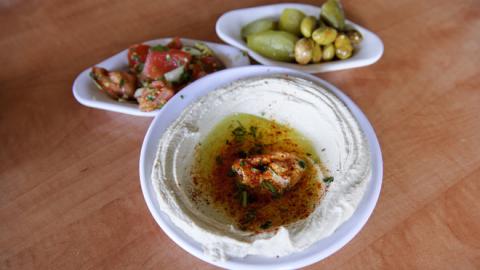We can learn a lot from an old cookbook. And the recent release of Scents and Flavors: A Syrian Cookbook, a new translation from NYU Press’s Library of Arabic Literature, provides a glimpse of social history that feels particularly timely.
The book’s original author is lost to the ages, but according to translator Charles Perry, “we know that Scents and Flavors was compiled in Syria at some time around the middle of the thirteenth century.” And we know it was a hit.
At a time when the region was in its historiographical golden age, with much of modern-day Syria under the control of the Ayyubid dynasty, Scents and Flavors was a bestseller. “More copies of it have survived than of all the other medieval cookbooks combined,” writes Perry.
Even so, the recipes within don’t necessarily represent the food of the people. Perry acknowledges that “the cuisine of this book is definitely banquet food and special-occasion food.” Rather than giving us a glimpse into the life of the average 13th-century Syrian, these recipes show us the opulent upper limits of the cuisine from those who cooked and ate it—chefs developing recipes, explorers discovering ingredients, the wealthy elite who demanded luxury and ingenuity.
Here’s a glimpse inside:
Forgotten Foods
There are historical quirks, as is to be expected—a whole chapter about various preparations of sheep tail fat, for instance, which Perry notes was the ubiquitous cooking fat of the time. Many recipes appear to have fallen out of fashion since the 1200s: banana lamb stew, reminiscent of similar Indian or East African sweet curries, doesn’t turn up on Middle Eastern menus these days. With food storage less of a dire concern, certain preservation methods—like salted whole birds in lemon juice—have become archaic. Lettuce pudding and boiled crocus bulbs don’t seem to be commonly eaten anymore, either. Various fermented condiments—a type of soy sauce made of barley and a liquidy blue cheese, for instance—have disappeared entirely.
Science and Technology
Instructions for making vinegars and perfumes require a knowledge of distillation—a process that had been around for quite some time at this point, but was perfected in the medieval Arab world by scientists and alchemists. And there are a few particularly inventive usages of everyday items: eggs boiled in glass bottles, which are broken carefully before frying the bottle-shaped cakes fried in oil, and faux marrow made of liver and tail fat and boiled in thigh-bone-shaped copper tubes.
The Sweet Life
Delightfully evident is a highly technical approach to candy and sweets; the author makes a distinction between ten different kinds of syrup, so dessert was clearly a serious business. Some confections have fantastical names—there’s horsehide, which sounds a bit like a funnel cake; Eat and Give Thanks, layered fried crepes with pistachios; The Judge’s Morsel, battered, fried clusters of nuts flavored with rosewater; Maidens’ Cheeks, round fried dough with dried fruits. At least one pastry, though, has retained its name after these hundreds of years: Zaynab’s Fingers, syrupy fried treats still common especially during Ramadan.
International Influences
The region was a cultural crossroads, and the lasting impact of outside cuisines is obvious from the book. North African couscous gets a call out, and there are distinctions made between Egyptian and Georgian Kebabs. Other recipes and ingredients come from Turkey, Iraq, Armenia, Persia, China and beyond. There’s also a whole section on ṣalṣ, a class of condiments made with nuts and herbs, the name for which draws an obvious parallel to the Romance cognate salsa. Perry seems to support “the idea that they were learned from the Crusader,” though “only the first of them actually resembles a medieval European sauce.”
Familiar Levantine Favorites
On the whole, these dishes are recognizable. Stews, roasted meats, pickles, desserts with rosewater and pistachios—it’s easy to discern the lineage that connects many of the recipes with the robust cuisine of the Levant today. We see sikbaj, a ubiquitous vinegar-based stew that we now know is an early ancestor of ceviche, aspic and even fish and chips. There’s roasted chicken with sumac, kebabs and pilaf with saffron. Fresh chickpea kisāʾ, while more intricate than a typical hummus with the inclusion of ingredients like pickled lemon and Chinese cinnamon, is still a fairly obvious ancestor. Fava beans cooked with yogurt, garlic and olive oil are recognizable as ful medames, and there’s knafeh, sambusek, halva, stuffed eggplant, all there in the canon of Syrian food back in the 1200s.


Spread the word